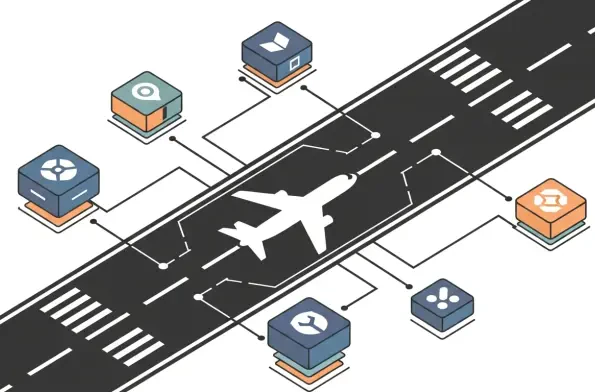Why a supplier’s slip can ripple across an airline’s ecosystem
News that a vendor breach exposed Iberia customer names, emails, and Iberia Plus IDs jolted security teams because it revealed how familiar details can be weaponized even when passwords and cards stay safe. Several airline CISOs noted that the disclosure felt surgical: limited data, broad impact, and immediate warnings about phishing.
Experts across incident response, privacy, and fraud prevention agreed that aviation’s reliance on loyalty platforms, maintenance portals, and customer engagement tools creates blind spots. Moreover, those dependencies often sit outside core SOC visibility, leaving gaps that attackers learn to thread.
Panelists in carrier working groups framed this roundup as a map: unpack the mechanics, weigh the Hackmanac claims, trace attacker habits, then turn the lessons into playbooks vendors and airlines can jointly execute.
Inside the breach’s blast radius: what the incident reveals about aviation’s digital dependencies
The anatomy of the exposure: minimal data, maximum leverage
Fraud teams argued that identity markers and loyalty IDs supercharge phishing because they validate the con. In contrast, some privacy advisors downplayed long-term harm but conceded that near-term social engineering risk spikes when context-rich crumbs surface.
Investigators flagged the unverified 77GB sale claim tied to passenger and technical documents as a scope wild card. While overlap remains unclear, risk managers warned that rumor alone can drive costly containment and customer comms.
Control architects split on containment quality: one camp praised rapid verification code changes; another saw the supplier path as proof of a deeper governance gap around data residency and SaaS entitlements.
Threat actors pivot to the edges: airline-adjacent platforms under fire
Threat intel analysts linked the incident to a broader pattern: crews like Scattered Spider and “Scattered Lapsus$ Hunters” press third-party SaaS, including CRM ecosystems such as Salesforce, to reach high-value data with low-friction access. However, defenders noted that robust tenant segmentation blunts that edge.
Practitioners described live chains where vendor access, ticket queues, and identity resets let actors impersonate both customers and staff. Carriers that tuned vendor monitoring reported lower recovery bills and fewer regulatory headaches.
Security economists added a competitive angle: the airlines that standardize vendor control baselines gain durable resilience, shaving days off incident lifecycles and preserving brand equity when crises hit.
The hidden value of “non-sensitive” data and technical docs
Investigators observed a market shift where brokers monetize loyalty IDs and MRO or airframe details for reconnaissance and extortion pretext. Meanwhile, red teams demonstrated how that context accelerates privilege escalation.
EU privacy leads weighed GDPR thresholds alongside FAA and EASA safety norms when maintenance documents enter the picture. The consensus: safety reporting discipline complements, not replaces, data protection duties.
Advisors challenged the comfortable mantra that no passwords equals low risk, arguing that context is the new crown jewel when adversaries blend OSINT, loyalty metadata, and reset flows.
Loyalty programs, reset flows, and verification: the soft underbelly
Customer care leaders reported convincing scams that use loyalty identities to bypass call-center friction and pivot into account takeover. In contrast, programs with strict recovery steps saw far fewer successful social plays.
Comparisons across carriers showed a split: some rolled out MFA, out-of-band checks, and anomaly detection at scale; others still rely on legacy processes that favor convenience over assurance.
Forward-leaning shops pushed vendor zero trust, granular OAuth scopes, continuous risk scoring, and supplier attestations as procurement gates, turning security into a selection filter rather than a retrofit.
What to do now: practical risk cuts for airlines and their vendors
Roundtable voices aligned on three takeaways: third-party exposure can sidestep hardened cores, phishing is the near-term blast, and fast visibility with crisp response wins the day. That lens guided pragmatic steps that teams can deploy without waiting on major replatforming.
Identity-first controls set the foundation: per-API least privilege, just-in-time access, and short-lived tokens for vendors. Next came fortified resets with step-up verification, transaction signing for profile changes, and velocity limits on loyalty redemption to contain fraud loops.
Teams emphasized telemetry: cross-tenant SIEM, rich SaaS audit logs, risk dashboards for suppliers, and honeytokens to trip on exfil attempts. Contracts closed the loop with breach SLAs, control attestations, architectural reviews, right-to-audit, and drills that mirror Iberia’s verification moves and prime customers for phishing waves.
Beyond containment: reshaping aviation’s vendor trust model
Security leaders reaffirmed a simple theme: airline risk now lives in the supply chain, where convenience, data sharing, and tempo intersect. However, treating every integration as a boundary changes the math, making exposure measurable and manageable.
The next phase pointed toward tighter vendor onboarding, shared threat intel for airline-adjacent platforms, and stronger expectations on third-party transparency under regulatory eyes. Those shifts reduce gray areas where attackers currently thrive.
This roundup closed on movement, not comfort: teams prioritized boundary mapping, aggressive scope minimization, and continuous monitoring of each integration, and set new procurement terms that made that posture durable.













